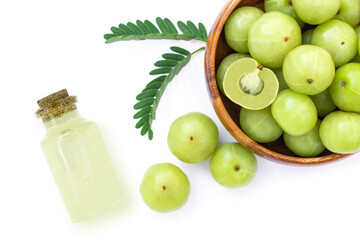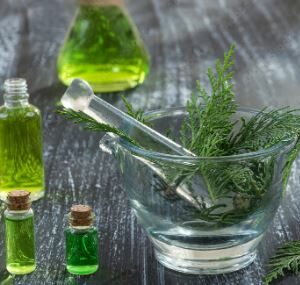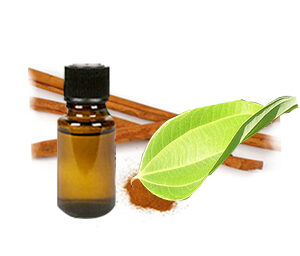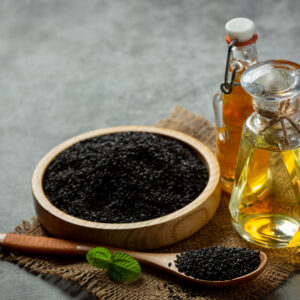Amla Oil
₹375 – ₹575 (Price Per Kg) Excluding GST
Bulk Discount on total Order(Cart) Value.
You Will Get Discount while Check Out.
Value Wise Discount Slab Detail as below
| Discount Structure | ||
|---|---|---|
| Total Order(Cart) Value | Discount % on Total(Cart) Value | Discount Value Upto |
| ₹3000 to ₹9999 | 3% | ₹90 - ₹300 |
| ₹10,000 to 29,999 | 5% | ₹500 - ₹1500 |
| ₹30,000 to ₹69,999 | 7% | ₹2100 - ₹4900 |
| ₹70,000 to ₹1,29,999 | 9% | ₹6300 - ₹11,700 |
| ₹1,30,000 to Above | 13% | ₹16,900 - More |
- Description
- Additional information
- Feature | As Medicine | As Perfumes | In aromatheraphy
- Dosage | Formulation | Blends Well With | Blend
- Purchase Note | Shipping | Packing Size
- Product MSDS/COA
Description
Description
Amla oil, also known as Indian gooseberry oil, is a traditional Ayurvedic oil made from the fruit of the Indian gooseberry (Emblica officinalis). Amla fruit is highly prized in Ayurveda for its many health benefits, and amla oil is used in Ayurvedic medicine for hair and scalp care, as well as for skin and general health.
Amla oil is made by infusing amla fruit with a carrier oil, such as coconut oil, sesame oil, or almond oil. The amla fruit is first dried and then cooked in the carrier oil over low heat for several hours, allowing the nutrients from the fruit to be extracted into the oil.
Amla oil is rich in antioxidants, vitamin C, and essential fatty acids, which help nourish and moisturize the hair and scalp, promote hair growth, and prevent premature graying. It is also believed to help prevent dandruff and other scalp conditions, and can be used to soothe dry, itchy, or inflamed skin.
Amla oil is often used in combination with other natural ingredients, such as henna, shikakai, and brahmi, to create hair care treatments that promote healthy hair growth and shine. It is widely available in health food stores and online, and is used by many people as a natural alternative to commercial hair and scalp care products.
Uses
Amla oil has many potential uses and benefits for hair, skin, and general health. Here are some of the most common uses of amla oil:
- Hair care: Amla oil is often used as a hair care treatment to nourish and moisturize the hair, promote hair growth, and prevent premature graying. It can be applied to the scalp and hair before washing, or left in overnight for a deep conditioning treatment.
- Scalp care: Amla oil is believed to help soothe and moisturize the scalp, and can be used to treat dandruff, dryness, and other scalp conditions.
- Skin care: Amla oil can be used to moisturize and nourish the skin, and may help improve skin elasticity and prevent signs of aging.
- General health: Amla oil is rich in antioxidants, which can help boost the immune system and protect the body against free radical damage. It may also help lower cholesterol levels and support cardiovascular health.
- Ayurvedic medicine: Amla oil is a key ingredient in many traditional Ayurvedic remedies, and is used to treat a wide range of health issues, including digestive disorders, respiratory infections, and liver and kidney problems.
Overall, amla oil is a versatile and beneficial natural remedy that can be used in a variety of ways to support hair, skin, and general health. However, as with any natural remedy, it’s important to talk to a healthcare provider before using amla oil, especially if you have any underlying health conditions or are taking medications.
#SuyashAyurveda #naturalessentialoils #essentialoiltherapy #essentialoilblend #essentialoilsforhealth #aromatherapydiffuser #aromatherapyoils #essentialoilsforeverything#essentialoils #aromatherapy #naturalremedies #wellness #holistichealth #selfcare #healthylifestyle #amlaoil #indian gooseberry oil #haircare #scalpcare #naturalskincare #ayurveda #healthylifestyle #hairgrowth #prematuregraying #naturalremedy #antioxidants #immunesupport #cardiovascularhealth #digestivehealth #healthyhair #naturalbeauty #organichaircare #hairconditioning #hairtreatment
Amla oil has a range of potential benefits for hair, skin, and general health. Here are some of the most commonly cited benefits of amla oil:
- Promotes hair growth: Amla oil is rich in vitamin C and antioxidants, which can help nourish the scalp and promote healthy hair growth. It may also help strengthen hair follicles and prevent hair breakage.
- Prevents premature graying: Amla oil is believed to help prevent premature graying of the hair by nourishing the hair follicles and promoting melanin production.
- Moisturizes the scalp: Amla oil can help soothe and moisturize the scalp, which can help alleviate dandruff, dryness, and other scalp conditions.
- Nourishes the skin: Amla oil is rich in antioxidants, which can help protect the skin against free radical damage and promote skin elasticity. It may also help improve skin tone and texture.
- Boosts the immune system: Amla oil is a rich source of vitamin C, which is an important antioxidant that can help boost the immune system and protect the body against infections and diseases.
- Supports cardiovascular health: Amla oil may help lower cholesterol levels and support cardiovascular health by reducing inflammation and oxidative stress.
- Improves digestion: Amla oil is a common ingredient in many traditional Ayurvedic remedies for digestive disorders, and is believed to help soothe and heal the digestive system.
Overall, amla oil is a versatile and beneficial natural remedy that can be used to support hair, skin, and general health. However, more research is needed to fully understand the potential benefits of amla oil and its mechanisms of action.
Additional information
| Weight | 1 kg |
|---|---|
| Available Grades As Below Click to Buy | Economical Grade, Regular Grade, Premium Grade |
Feature | As Medicine | As Perfumes | In aromatheraphy
Feature
Amla oil offers several notable features that contribute to its popularity and effectiveness. Here are some key features of amla oil:
- Rich in antioxidants: Amla oil is abundant in antioxidants, particularly vitamin C. These antioxidants help combat free radicals, which can damage cells and contribute to aging and various health issues.
- High vitamin content: Amla oil contains essential vitamins, including vitamin C, vitamin A, vitamin E, and vitamin B-complex. These vitamins contribute to the nourishment and overall health of the hair, skin, and body.
- Hair nourishment and growth: Amla oil is widely used for promoting hair growth and maintaining healthy hair. Its nutrient-rich composition nourishes the hair follicles, strengthens the strands, and stimulates growth, making the hair look thick and lustrous.
- Scalp care and dandruff control: Amla oil has soothing properties that help nourish and moisturize the scalp, reducing dryness and itchiness. It can also assist in controlling dandruff and other scalp conditions, promoting a healthy scalp environment.
- Natural hair conditioner: Amla oil acts as a natural conditioner, providing deep moisturization to the hair strands. It helps smoothen and soften the hair, reducing frizz and enhancing shine and manageability.
- Anti-graying properties: Amla oil is believed to help prevent premature graying of the hair by nourishing the hair follicles and supporting melanin production, the pigment responsible for hair color.
- Skin rejuvenation: Amla oil’s antioxidant and vitamin content can benefit the skin by promoting collagen production, improving elasticity, and reducing the signs of aging. It can help moisturize and nourish the skin, leaving it smooth and radiant.
- Versatile and adaptable: Amla oil can be used in various ways, such as a standalone hair or scalp treatment, as an ingredient in hair masks or DIY skincare recipes, or as an addition to carrier oils for personalized blends.
These features make amla oil a sought-after natural remedy for hair care, scalp health, and skincare, providing a range of benefits for overall well-being.
As Medicine
- Digestive health: Amla oil is known to have digestive properties and is used to promote digestion, alleviate constipation, and improve overall gastrointestinal health.
- Respiratory health: Amla oil is used in Ayurvedic medicine to address respiratory issues such as cough, asthma, and bronchitis. It is believed to help reduce inflammation in the airways and support respiratory health.
- Liver health: Amla oil is believed to have hepatoprotective properties, meaning it helps protect and support liver health. It is used to promote liver detoxification and improve liver function.
- Eye health: Amla oil is used in Ayurvedic medicine to promote eye health and improve vision. It is believed to have a cooling effect on the eyes and can help reduce eye strain and fatigue.
- Anti-inflammatory properties: Amla oil contains antioxidants and anti-inflammatory compounds that may help reduce inflammation in the body. It is used to address various inflammatory conditions such as arthritis and joint pain.
- Immune system support: Amla oil is rich in vitamin C and other immune-boosting compounds. It is used to support and strengthen the immune system, helping the body defend against infections and diseases.
- Stress relief: Amla oil is known to have adaptogenic properties, meaning it helps the body adapt to stress and promotes overall well-being. It is used in Ayurvedic medicine to reduce stress, anxiety, and fatigue.As Perfumes
- Fragrance note: Amla oil has a distinctive, earthy scent with hints of tangy and bitter notes. Its aroma is often described as green, fruity, and slightly floral. Perfumers may use amla oil as a standalone note or blend it with other ingredients to create unique fragrance compositions.
- Fixative properties: Amla oil has fixative properties, meaning it helps the fragrance molecules in perfumes last longer on the skin. It can enhance the longevity and staying power of the overall fragrance.
- Complementing other notes: Amla oil’s aroma can complement and enhance various fragrance notes. It blends well with citrus, floral, and woody notes, adding depth and complexity to the perfume.
- Natural and botanical appeal: Amla oil is derived from the Indian gooseberry fruit, which has a rich cultural and botanical significance. Its use in perfumes can provide a natural and botanical element, appealing to those who prefer fragrances with a touch of traditional or herbal elements.
When using amla oil in perfumes, it’s essential to consider its potency and balance it with other ingredients to create a harmonious fragrance composition. Perfumers and fragrance experts carefully evaluate and experiment with different concentrations and combinations to achieve the desired scent profile.
In aromatheraphy
- Inhalation: Amla oil’s aroma can be inhaled directly or diffused in the air using an aromatherapy diffuser. Inhaling the scent of amla oil can help create a sense of relaxation, uplift the mood, and provide a grounding effect.
- Massage: Amla oil can be blended with carrier oils, such as coconut or almond oil, and used for aromatherapy massage. The oil can be applied to the skin during a massage session, allowing the aroma of amla oil to be inhaled while receiving the therapeutic benefits of massage.
- Bathing: Adding a few drops of amla oil to a warm bath can create an aromatic and therapeutic bathing experience. The aroma of amla oil can help promote relaxation, relieve stress, and create a soothing atmosphere.
- Personal care products: Amla oil can be incorporated into homemade or natural personal care products, such as body lotions, creams, or bath salts. This allows you to enjoy the aromatic benefits of amla oil while nourishing and caring for your skin.
- Emotional well-being: Amla oil’s aroma may have calming and grounding effects on the mind and emotions. It can be used to create a tranquil environment, reduce feelings of anxiety or stress, and promote overall relaxation.
Dosage | Formulation | Blends Well With | Blend
Dosage
When it comes to the dosage of amla oil, it’s important to note that there are no established standard dosage guidelines due to variations in product formulations, concentrations, and individual factors. However, here are some general considerations:
- Hair and Scalp Application: Amla oil is commonly used topically on the hair and scalp. The amount of oil to use will depend on the length and thickness of your hair. Typically, a small amount, such as a few teaspoons, is sufficient to massage into the scalp and distribute through the hair. You can leave it on for a few hours or overnight before washing it out.
- Skin Application: Amla oil can be applied to the skin for moisturizing and nourishing purposes. Apply a small amount to the desired area and massage it gently until absorbed. Adjust the quantity as needed based on the size of the area being treated.
- Inhalation: If using amla oil for aromatherapy purposes, follow the manufacturer’s instructions on the specific product or use an aromatherapy diffuser. Start with a few drops of amla oil and adjust the amount according to personal preference and the size of the room.
It’s essential to consider individual sensitivities, allergies, and skin reactions when using amla oil or any new product. Conduct a patch test on a small area of skin and observe for any adverse reactions before using it more extensively.
Additionally, it’s recommended to consult with a qualified healthcare professional, aromatherapist, or Ayurvedic practitioner for personalized advice on dosage, usage, and suitability, especially if you have underlying health conditions or are taking medications.
Please note that the information provided is for general informational purposes, and it’s always best to seek professional guidance for your specific needs and circumstances.
Formulation
The formulation of amla oil can vary depending on the specific brand or manufacturer. However, here is a general overview of the typical formulation process for amla oil:
- Amla Fruit: The key ingredient in amla oil is the Indian gooseberry (amla) fruit (Emblica officinalis). The ripe or dried amla fruit is typically used for oil extraction.
- Carrier Oil: A carrier oil is used as a base to infuse the amla fruit and extract its beneficial compounds. Common carrier oils used for amla oil formulation include coconut oil, sesame oil, almond oil, or a blend of different oils.
- Preparation of Amla: The amla fruit is usually dried and powdered before being used for oil infusion. This drying process helps concentrate the nutrients and allows for better extraction.
- Infusion Process: The carrier oil is heated gently, and the powdered amla fruit is added to it. The mixture is simmered over low heat for several hours to allow the active compounds from the amla fruit to infuse into the carrier oil.
- Straining and Filtration: After the infusion period, the oil is strained to remove the amla fruit particles and any other impurities. This ensures a smooth and clear final product.
- Storage: The amla oil is stored in a clean, airtight container to preserve its freshness and potency. It is typically stored in a cool, dark place away from direct sunlight.
It’s important to note that different manufacturers may use variations of this process, such as incorporating additional herbs or ingredients for added benefits or adjusting the specific ratios and extraction methods. It’s advisable to refer to the product packaging or consult the manufacturer for detailed information on the formulation of a specific brand of amla oil.
Additionally, if you are interested in making amla oil at home, it’s recommended to follow a trusted recipe or consult with an Ayurvedic practitioner or herbal expert for guidance on the proper preparation and formulation techniques.
Blends Well With
Amla oil can blend well with various other oils, herbs, and essential oils, creating unique and beneficial combinations. Here are some ingredients that amla oil blends well with:
- Coconut oil: Coconut oil is a popular carrier oil that complements amla oil well. It helps moisturize and condition the hair and skin, making it an excellent choice for hair and scalp treatments.
- Almond oil: Almond oil is another carrier oil that works well with amla oil. It adds nourishment, promotes shine, and helps improve the texture of the hair and skin.
- Neem oil: Neem oil is known for its antimicrobial and skin-soothing properties. Combining amla oil with neem oil can create a potent blend for scalp health and addressing dandruff or scalp irritations.
- Bhringraj oil: Bhringraj oil is commonly used in Ayurveda for promoting hair growth and maintaining healthy hair. Mixing amla oil with bhringraj oil can enhance its hair-strengthening and conditioning properties.
- Rosemary essential oil: Rosemary essential oil has stimulating and invigorating properties. When combined with amla oil, it can help promote circulation to the scalp and support hair growth.
- Lavender essential oil: Lavender essential oil is known for its calming and relaxing effects. Mixing it with amla oil can create a soothing blend that helps reduce stress and promote a sense of well-being.
- Hibiscus flower extract: Hibiscus flowers are often used for their hair-conditioning and anti-aging properties. Combining amla oil with hibiscus flower extract can create a nourishing and revitalizing blend for the hair and scalp.
These are just a few examples of ingredients that blend well with amla oil. The specific combinations and ratios can vary based on personal preference and desired benefits. It’s always recommended to perform a patch test and consult with an Ayurvedic practitioner or a knowledgeable professional before creating your own blends to ensure compatibility and safety.
Blend
Certainly! Here’s a simple recipe for an amla oil blend that you can try at home:
Ingredients:
- 2 tablespoons of amla oil
- 1 tablespoon of coconut oil
- 5 drops of rosemary essential oil
Instructions:
- In a small bowl, combine the amla oil and coconut oil.
- Add the rosemary essential oil to the mixture and stir well to blend all the ingredients thoroughly.
- Transfer the blend into a clean, airtight bottle or container for storage.
Usage:
- Hair and scalp treatment: Apply a small amount of the amla oil blend to your scalp and hair. Massage it gently to ensure even distribution. Leave it on for a few hours or overnight before washing it out with a mild shampoo.
- Hair conditioning: You can also use a small amount of the blend as a leave-in conditioner after shampooing. Apply it to damp hair, focusing on the ends, and style as usual.
Please note that this is a basic recipe, and you can modify it based on your preferences and needs. Feel free to adjust the quantities of the ingredients or explore additional essential oils or carrier oils that you find suitable.
Before using the blend, perform a patch test on a small area of skin to check for any adverse reactions or allergies. Additionally, if you have any underlying health conditions or are pregnant or nursing, it’s advisable to consult with a healthcare professional before using this or any homemade blend.
Purchase Note | Shipping | Packing Size
Purchase Note
- All products are strictly for external use. unless until specifically reconfirmed
- Please refer precautions of using essential oil always before using it directly or indirectly
- All benefits shown are suggested not to be claimed
- Color of the product and packing may vary from lot to lot and time to time. so kindly consider the same before buying
- The product are mostly delivery all over world, but in case if the location is ODA we would be helpless in delivering, so in these case we will refund the paid amount
- Goods are subject to availability at the time of payment received,
- If any order is in shortfall conditions, balance of your amount will be refunded or credited to your account,
- Replacement Policy or refund Policy is strictly within 7 days of receipt of goods
- Lead Time: Most of the cases the order is dispatched on the next working day, but in some cases the order can get a delay until 7 days .. so request to note the aboveShipping
- ShippingCourier -Shree Anjani Courier, DTDC, Professional Courier, Blue Dart, Fedex, DHL
- Air -Through all reputed airlines
- Sea-In LCL and shipments surf
- Surface – TCI Express, V trans, VRL Logistics, Gati, V-Tans, Fedex, CPS and all major transportersPacking Size1 kgs 10 Kgs 25 Kgs






